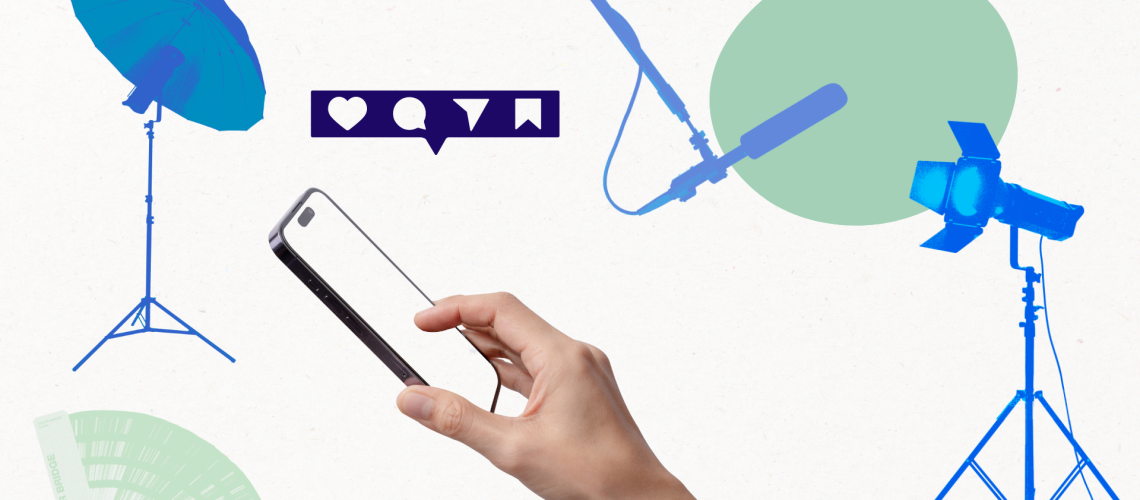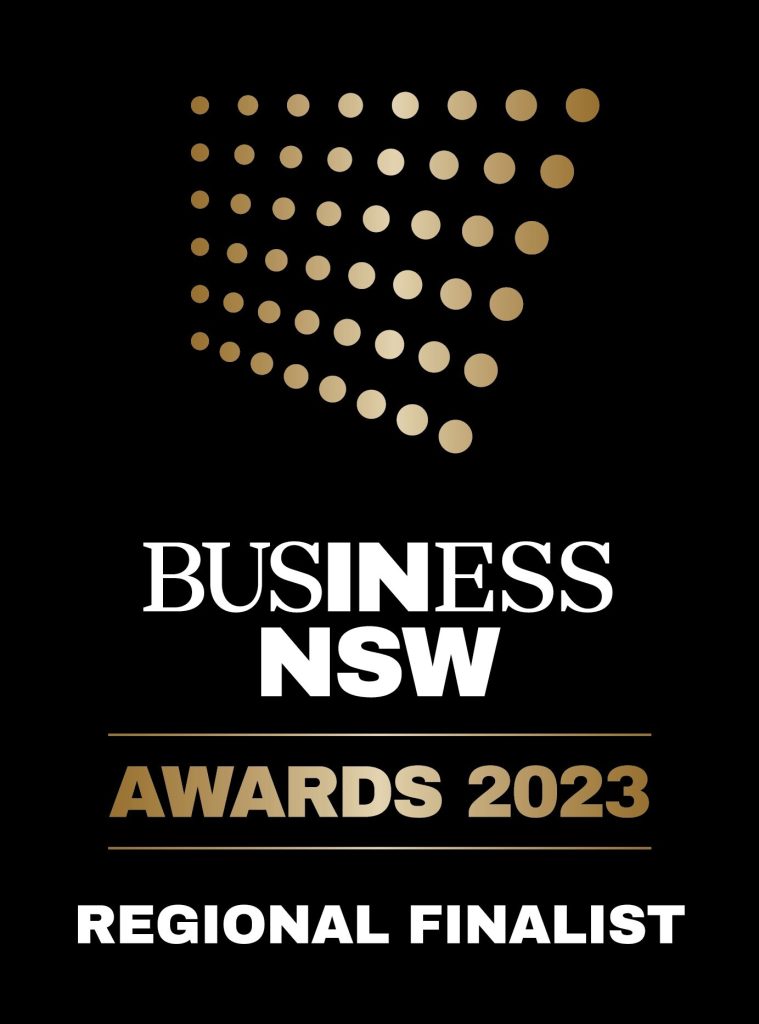What is a Brand?
In order to consider how to best harness brand power, we need to review our understanding of what is a brand?
Many organisations make the mistake of thinking a brand is simply a logo. A logo is just one element of a brand. A brand is an identity that defines an organisation, product, service or person in its own unique way and differentiates it from all other organisations, products, services or people in the space. Just like any personal identity, it is multi-faceted.
A well-crafted brand will be established with a clear strategy and have a set of distinctive and signature visual elements. These include a logo, colour palette, typography, set of graphics and imagery, a tone of voice outline, that will represent the organisation, embody its values and be able to create recognition and recall in the minds of users.
Clarity, Consistency and Congruence
The key to brand power is in ensuring that three characteristics are always present: clarity, consistency and congruence – which will enable the optimisation of each facet of a brand to form a complete identity in the minds of users. A brand needs to capture awareness and evoke a set of qualities that are relational. A brand’s job is to build relationships with audiences. Relationships are created through trust. An effective brand will evoke emotional responses from audiences designed to prompt action and grow loyalty. This is what makes brands so valuable.
Building Brand Power in a Modern Marketplace
Brand power is your brand’s ability to do exactly what it was designed for – attract new customers and evoke action, which could mean purchasing your service or product, following a social account, referring a friend, posting a review, retaining existing customers and growing loyalty.
In today’s hyper-connected world of instantaneous communication, audiences are information saturated. They are content-fatigued, over-informed and change their minds rapidly.
Did you know that nearly 80% of marketers say their industry changed more in the past three years than it has in the last five decades?*
Why? Because consumer attitudes and preferences are changing just as quickly. So how does a brand keep up in such a volatile marketplace?
Two words: Authenticity. Consistency.
Brand Authenticity
Brands that express the authentic purpose and values of their organisation with sharp clarity have a stronger potential to cut through digital noise and reach their targeted audiences with engaging content.
Today’s tech savvy, research-orientated audiences seek brands that offer genuine, credible, trustworthy and authentic experiences.
Consider the example of a consumer wishing to purchase a laptop. They begin finding out information about a single brand and model and can immediately compare it with countless other models. Depending upon the search history, retargeted online ads will then push products to their device – usually bombarded with technical specifications, pricing, shipping and more.
All the while a little voice in the back of their heads is making their thumb hover over the purchase button rather than hitting submit. Is this a trustworthy company? What does the community say about this product?
Brand authenticity means that the look, feel and sound of your brand matches how you orientate and present your organisation to your audience base and their customer experience journey.
When brand inauthenticity does not align the user experience, trust is broken. And in today’s online world, broken trust doesn’t just mean loss of one customer. Their ensuing negative review can impact potential future customers as well.
Most users want and expect authenticity above perfection.
Today’s consumers give preference to brands that are ‘real and organic’ rather than ‘perfect and well-packaged.’*
In a recent study, two-thirds of Gen Z respondents described having ‘an increase in positive feelings about a brand because of an association with a social cause.’
When a user perceives that a brand has transparency and operates with the same values they espouse, they can create a connection with that brand which far exceeds the potential for connecting with brands that are transaction-led.
Harnessing true brand power starts with the brand foundations not being about what you sell, but what you stand for – an authentic set of values.
Brand Consistency
Brand power can be only harnessed when all elements of a brand are used consistently and according to its defined and original set of identifying factors. Brand Style Guidelines refer to brand logo, placement, colours, graphics, imagery, fonts and tone of voice.
Each time a brand is changed or key messages are communicated in a way that is disingenuous to the brand’s authentic personality, it will have a negative impact on the audience’s perceptions.
Lack of Trust Breeds Negative Perceptions
At the very least, the consumer won’t recognise it as an organisation’s brand. That means they won’t engage with marketing and PR collateral in the intended way. This will not grow trust in the brand and enable a clear movement along the pathway to purchase cycle.
In a worst case scenario, a consumer could experience a sense of transgression in the trust relationship, which might result in them no longer trusting the brand. There could be potential further negative impact through negative reviews/commentary online.
Whether establishing and building a brand from the ground up or growing an established organisational brand, harnessing brand power is about how effective your brand is at cutting through digital noise to enable enterprise growth.
Brand Names: Choosing the Right Brand Name
Choosing the right brand name is the first step to maximising brand power. There are many factors to consider when choosing the right brand name. When done correctly, a brand name should be distinctive and readily recognisable, simple to pronounce, easy to recall, be consistent with organisational values and won’t create any limitations as your organisation grows. The right brand name needs to serve both your organisation and stakeholder sets.
Considerations When Choosing a Brand Name
With so many different sectors offering a wide array of products and services, there is not a ‘one size fits all’ brand name direction. Below is an overview of strategic elements to consider at the brand establishment phase.
1.Brand Features and Benefits – depending on what industry, product/s or service/s an organisation is offering, the brand name will usually either articulate the features or benefits that an organisation offers. The brand name emphasises the features of a service/product set is organisationally focused (eg ‘High Tech Air Conditioning). A brand name that articulates the benefits of the product/service sets (eg Stay Cool Airconditioning) is more audience-centric.
2. Brand Founder Focus – when an enterprise brand is being established, with a leader at the brand’s forefront, it can be a significant personal journey of growing online visibility for the founder as the face of the brand. Many business founders begin with a personal purpose that flows into an organisational vision. It’s important to consider if the brand name focuses on an element of the founder or on the benefits for the consumer?
When a founder-focused brand name articulates the values and aspirations of the consumer set, this brand name activates a powerful Personal Brand identity and Brand Spiral strategy. For example, Vim + Zest worked with The Farmer’s Daughter, an online artisan homewares boutique, to establish its branding, website and social strategy. While the brand name directly identifies the company’s founder Georgie Copeland, it also speaks to the aspirational aesthetic that the consumer seeks and aligns with the brand’s voice and heavy focus on storytelling.
3. A Brand Name That Retains Future Growth Potential – a brand name is intended to stay with a business throughout the duration of the business’ life. Consider the brand collective. Would the brand name still work in a branded house? Or a house of brands?
Brand Guidelines: Protect Your Brand Power
During the brand establishment phase, a Brand Style Guide (or Brand Guidelines) must be prepared as the foundational document that defines how, when and where all the brand elements are to be used.
A brand has multiple different elements that typically include
- Logo
- Graphics, illustration and iconography
- Colour palettes
- Fonts and typography
- Imagery, moodboards, photography and videography
- Brand tone of voice
During the brand establishment phase, a Brand Style Guide (or Brand Guidelines) must be prepared as the foundational document that defines how, when and where all the brand elements are to be used.
Specific components of brand guidelines include the Brand Value Proposition, primary, secondary, and tertiary logos, logo placements, the space required around a logo in order to ensure visibility and legibility, specific colour codes to ensure accuracy of use, tone of voice and examples of language and written style conventions, creative assets, partner use of logos and how logos are not to be used etc.
Only through consistent and correct use of a brand can an organisation achieve consistent brand awareness, recognition and recall. In this way, it can better grow its audience and propel them in their pathway to purchase journeys faster.
Brand Guidelines: Grow Your Brand Power
Once a brand name is established, organisations must shift their focus to brand building strategies. A brand building strategy is a multi-dimensional plan to increase awareness and grow brand loyalty by meeting current and potential consumers at every stage of the consumer decision making cycle from information seeking to purchase and referral.
The following list helps identify key areas that must be included in comprehensive brand building strategies.
1. Brand Building Strategies – Define Purpose
Create specific, measurable and timely goals and metrics for the outcome of a Brand Build strategy. This can include the number of social followers, website traffic, increases in sales, number of referrals and more.
2. Define Value Proposition – What Opportunity does a Brand Afford the Audience?
A Brand Value Proposition is a statement that identifies the brand by distinguishing it from its competitors and articulating the brand promise to the audience. It contains a statement that shows who the target audience is and how the brand will address the audience’s wants/needs/challenges, all the while distinguishing the brand from its competitors.
3. Key Messages – Reasons to Act
All brand building strategies contain a series of key messages that differentiate the brand from its competitors and provide tangible and practical reasons for the audience to choose that brand over others. They must be consistent with the brand’s unique tone of voice.
4. Brand Building Tactics
A series of brand building tactics are outlined as to how they bridge the gap between where the brand currently sits and where it wants to be. They are a series of initiatives that include a multi-dimensional approach to audience awareness and engagement. Read more about this in the Brand Campaigns section.
5. Brand Building Strategies – Timeline
Brand establishment and brand building contain key strategic action steps with a goal-defined timeline that clearly outlines who is responsible for the completion of each task. It contains a series of KPI and assessment/review points with metrics that ensures that performance is continually monitored.
6. Budget and Resources
This section of a brand building strategy outlines the total budget, and how financial and in-kind resources will be allocated to achieve critical goals. Ideally it would contain allowances for contingencies.
7. Brand Building Strategies – Metrics and Analytics
A series of benchmark metrics are placed at the beginning of Brand Build strategies to track and review brand performance. Specific metrics and analytics are dependent on the purpose or goals of the brand building strategy.
Planning brand building strategies takes the guesswork out of harnessing brand power – moving brand building from reactive to proactive.
Brand Campaigns: Maintaining Relevance
Strong, clear and well researched Brand campaigns build brand power. They require diligent planning, skilful execution and data analysis to optimise success.
To remain relevant in a volatile, fast-changing world, effective brand campaigns need to stay up to date – and know their audiences thoroughly.
Brand Campaigns: Prepare to Change Fast
Political turmoil, disruption to supply chains, unforeseen environment events and economic downturn have dramatic impacts on organisations and consumers alike. With access to more information than ever before, consumers are changing their minds rapidly, making resilience and the ability to speedily update an important feature of brand campaigns.
More than half of marketers are forced to pivot. Of those, 83% changed course in a brand campaign two to four times in one year.**
While no organisation can foresee the future, building contingencies into brand campaigns adds a sense of proactivity to the need for reaction.
Brand Campaigns: Multi-Channel Campaigns Boost Engagement
Successful brand campaigns reach audiences at every stage of the consumer decision making cycle, creating a flywheel that propels the audience to the purchase decision and into the realm of repeat customer and referrer.
Audiences are searching for different information at different points in their purchase journey.
When they are first presented with a brand or product, they may not be aware they want or need it. The job of the brand communication is then to identify the need so the audience pays attention and builds an empathetic relationship with the brand. They believe, ‘This brand understands me.’
When the consumer is interested but has not yet decided to buy they are seeking information. The role of the brand communication is then to engage the audience more by educating on the benefits of the product or service.
Later is this information-seeking cycle, the consumer may seek information regarding features and pricing to finalise their purchase decision. The role of brand communication then switches to persuasion.
Throughout every piece of brand communication the consistent and correct use of all branding assets will determine the level of brand awareness and recognition achieved. Brand consistency fuels brand power.
Examples of Brand Power
Authentic and consistent brands achieve digital cut through and propel the audiences forward at every stage of the purchase journey. Consider how this is achieved in the following examples of brand power.
Apple
As a company, Apple began with a purpose to build beautiful, intuitive and innovative connectivity by creating computers and technology products that are unlike any others on the market. Today, it continues to grow by articulating this purpose (rather than presenting itself as a tech device company). Whilst its brand elements have changed over time, Apple’s use of consistent visual elements and language iconography and style of language have remained directly linked to its purpose, vision and values.
Bunnings
In an Australian made example of brand power, Bunnings is the leading retailer of home improvement and lifestyle products. Its brand power lies in its ability to articulate its values at all communications touchpoints. The Bunnings brand is firmly rooted in the community, which conveys a sense of care and belonging – a value that many people can align to, pushing them past brand trust into, which then grows brand loyalty. This iconic brand has elevated weekend sausage sizzles to become part of the country’s culture framework.
Harness Brand Power through Consistent Branding Building
Building brand power requires an investment of introspection, research, clarity and discipline, and is the very foundation of all marketing. Clear branding foundations activate successful marketing by enabling cut through.
Want help to build your Brand Power? Explore Vim + Zest’s Brand Build packages, creating especially so your brand is optimised fast – and not left lagging behind.
*Georgiou, Michael (2021) How and Why to Build Brand Authenticity, Forbes
**Hubspot. (2023) The Hubspot Blog’s 2023 Marketing Strategy and Trends Report: Data from 1,200+ Global Marketers
Vim + Zest is a specialist Branding and Marketing agency for people and organisations that matter. We help leaders to create impact to build a better world.
Talk to us about how to build Brand Power. We have 3 Brand Build packages especially designed to elevate your brand and help your organisation avoid being lost in digital noise.
Book a consultation today.



